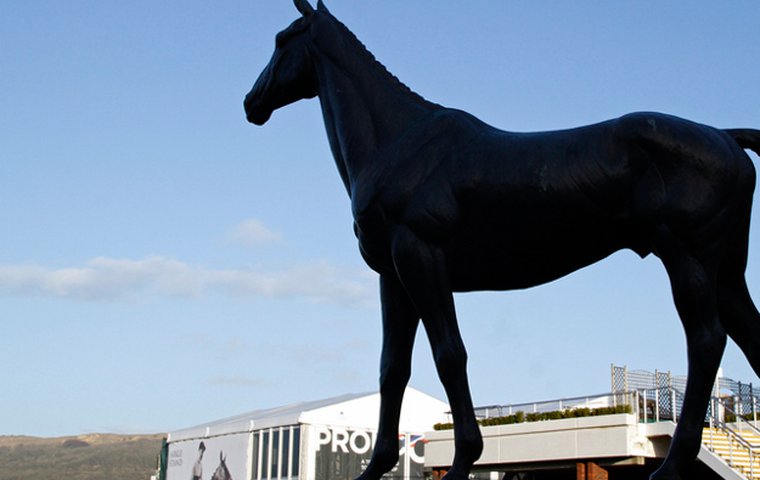
The Cheltenham Festival, the most popular – and profit-generating – horse race meeting in Europe is right around the corner. In part 4 of our series this week, Sean Magee examines the romantic appeal of jump racing.
Read the supplement on breeding jumpers
----------
Underpinning the magnetism of the sport’s big days is the close emotional bond between jump racing enthusiasts and the horses themselves – a position aided by a steady succession of wildly popular horses, whose continued presence in racecourse action is found much more satisfying than the here-today-gone-tomorrow careers of many top-class flat horses.
Examples abound of the special bond between the racing public and the equine performers. The great grey Desert Orchid, a horse so renowned that his name appeared in the Chancellor of the Exchequer’s budget speech in 1991, ran for 10 consecutive seasons, and the career of triple Grand National winner Red Rum had a similar span. The Dikler ran in the Cheltenham Gold Cup for no fewer than seven consecutive seasons, while Kauto Star ran his first race in Britain in December 2004 and his last in March 2012.
The public’s emotional bond with Arkle, who dominated the jumping scene in the mid-1960s and who is widely regarded as the greatest steeplechaser of all time, was based on much more than familiarity, for Arkle’s tenure at the very top was short-lived. He became the undisputed champion by winning the Cheltenham Gold Cup in March 1964, and ran his last race less than three years later in December 1966, days short of his 10th birthday.
Arkle was a genuine national hero in his native Ireland, and the way in which he transformed the profile of jump racing on both sides of the Irish Sea reflects a vital transformation in the sport’s fortunes. For “Himself” – as Arkle often was simply addressed – was the first great horse of the television age, when the tectonic plates of steeplechasing shifted as the beginnings of commercial sponsorship in the late 1950s and early 1960s brought the action to a much wider audience. The fact that Arkle devotees could so often see their hero in action widened his fan base and brought jump racing a huge injection of popular appeal.
Arkle died in May 1970, shortly before Nijinsky’s Epsom Derby win that year, and a touching farewell piece by John Oaksey in Horse and Hound magazine summed up what he considered an inappropriate bias against jump racing:
“It is a slightly sobering thought that, in under three minutes this week, a three-year-old colt will, by galloping 12 furlongs on the flat, have earned nearly as much (£60,000 or $100,000) as the total (£75,000 or $125,000) Arkle won by galloping almost 100 miles and jumping 500 fences and hurdles.
“Such are the topsy-turvy values of modern racing.”
Oaksey was too clever a man not to appreciate the various factors that had brought this situation about, and the principal one is the close connection between flat racing and the international bloodstock business.
One simple comparison underlines the gulf between the two codes when it comes to the breeding shed. Galileo, winner of the 2001 Epsom Derby and Irish Derby, stands as a stallion at Coolmore Stud in Co. Tipperary, where his covering fee – though officially “private” – is reported to be in the region of €300,000 ($501,000). Across the yard from Galileo lives Yeats, the only horse to have won the Gold Cup at Royal Ascot four times. A sire whose lifetime racing record is dominated by staying races, no matter how prestigious, is of little interest to breeders looking to win the major prizes on the flat. So, Yeats is a dual-purpose stallion: That is, a proportion of his offspring will race over jumps. Yeats’s fee is €6,000 ($10,000) – one fiftieth of Galileo’s.
But since the stakes are lower in jump racing, big-race winners can easily come from humble backgrounds, which further adds to the romantic appeal of the sport. There is no better example of that than Norton’s Coin, who won the 1990 Cheltenham Gold Cup (beating Desert Orchid into third) at 100-to-1. He was trained by Welsh dairy farmer Sirrell Grifiths, and his stable was a converted milking shed.
---


